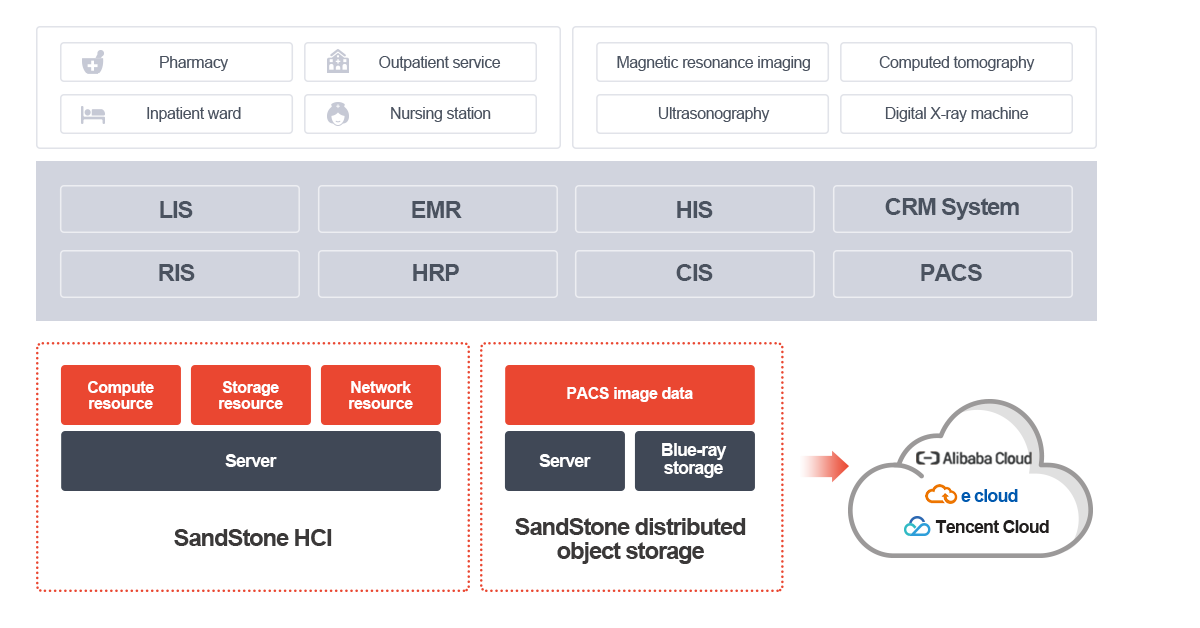In the medical industry, there are many seperated software systems with unstructured data dominant in number, so it is laborious to operate, manage and maintain the massive computing and storage resources. However, virtualization and integration of such computing and storage resources can simplify management, save IT resources, reduce the occupancy of the host room space, facilitate the development of an integrated information platform, and manage the correlation analysis of the data across business systems in the future as well as intelligent analysis of the big data.

SandStone medical private cloud solution has combined such major advantages as distributed storage and hyperconverged infrastructure. The distributed storage system considerately matches the industry characteristics of medical institutions dominated by PACS images and other unstructured data, able to support the high-performance storage, backup and archiving requirements of mass data at a reasonable cost. Moreover, the difficulty will not increase with the expansion of capacity in operation and maintenance management. The unified storage solution can also support the construction of an integrated information platform, as well as the correlation analysis of the data across business systems in the future and the intelligent analysis of the big data.
The hyperconverged infrastructure in the same set of unit equipment not only has compute, network, storage, server virtualization and other resources and technologies, but also includes backup, snapshot and other data management functions; besides, multiple unit equipment can be linearly scaled to realize modularized and smooth scale-out, and finally achieve a software-defined data center clear in architecture and simple in management.

Fast and stable response of high performance support services for mass data
Performance increases with capacity, supporting millisecond-level response to business requests in the scene of hundreds of millions of image files;
The functions of file backup and second-level rollback recovery can support rapid business recovery in abnormal scenarios.Lifecycle management automates data archiving
Intelligent hybrid cloud hierarchical storage for data full lifecycle management and data migration with customized strategies can support multiple storage solutions such as private , public and hybrid cloud;
Fast storage is used to store PACS database and short-term (usually 6-12 months) medical image data, so as to meet the requirements for storage of large capacity, high performance and high reliability, etc.;
It adopts public cloud / blue ray storage, able to support long-term storage of historical data; moreover, the internal data migration technology can achieve low-cost archiving and thus meet the requirements of laws and regulations for storage more than 15 years.Streamline IT systems to make business more agile
A unified management platform can reduce the cost of system operation and maintenance, release operation and maintenance manpower, and improve the utilization rate of the storage system by expanding the capacity as required;
Integrate the data center resources, reduce the space occupation of the server room, simplify the deployment and maintenance management, shorten the launch cycle of the business application, and upgrade the medical data center into an intelligent, automatic and efficient data center under a clear and simple infrastructure;
A set of storage supporting heterogeneous medical technology systems can fully utilize the traditional infrastructure, provide a unified data storage platform for all applications, and lay a solid foundation for the construction of the hospital integrated information platform.






